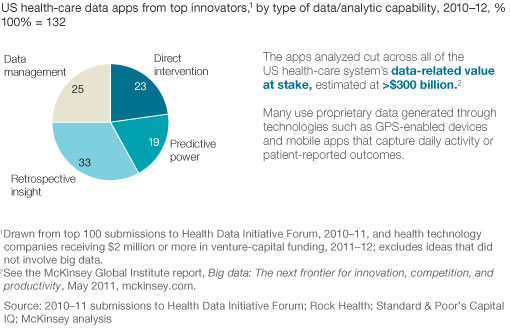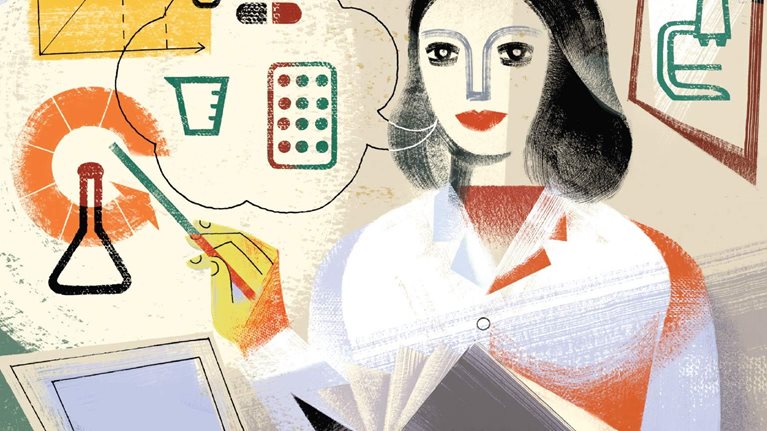To understand the potential of “big data,” look no further than the US healthcare sector. Information silos between payers and providers are crumbling, enabling the powerful integration of digitized public historical and real-time data. We recently glimpsed the future when we integrated two unique data sets: a sample of software applications submitted to the federal government’s Health Data Initiative Forum in 2010 and 2011 and the roster of software applications with venture-capital backing of at least $2 million in 2011 or 2012. About 40 percent of those data applications were aimed at direct health interventions or predictive capabilities. That’s a powerful new frontier for health-data applications, which historically focused more on data management and retrospective insights (exhibit).
Many innovative US health-care data applications move beyond retroactive reporting to interventions and predictive capabilities.

If early successes are brought to scale, we estimate that big-data applications could eventually strip more than $300 billion in costs from the nation’s health-care system and improve transparency to drive better patient outcomes. Such applications might help avoid costly readmissions, enhance the understanding of chronic diseases, and ensure that patients are treated in the care setting that best meets their needs.


